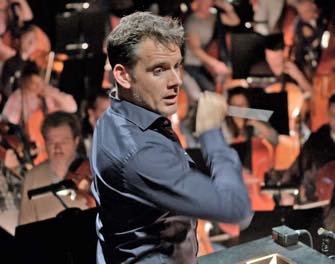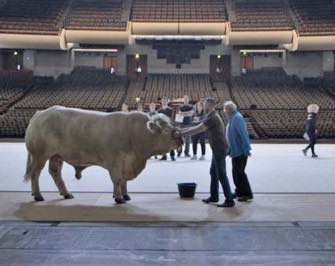
The Opéra National de Paris is a big, unwieldy machine that encompasses not only the French national opera company but also the national ballet. Jean-Stéphane Bron’s new documentary, L’Opéra, like Frederick Wiseman’s recent documentary on the National Gallery in London, offers a fly-on-the-wall peek at daily life behind the scenes.
Filmed between January 2015 and July 2016, the documentary takes in some dramatic moments in the life of the Paris Opera: it had a new general director, Stéphane Lissner, as well as a new ballet director, Benjamin Millepied, a French dancer and choreographer (perhaps more famous for being married to actress Natalie Portman) who had made his career in the United States with the New York City Ballet and L.A. Dance Project. He was hired by the Paris company to bring a breath of fresh air and American-style dynamism to this venerable institution, but he left in frustration after less than a year and a half when he realized that he was up against a rigid system that resisted change with all its might. The documentary records both his arrival and farewell.
Two themes that run throughout the film are specially endearing. The first involves the brilliant (and adorable) young Russian bass-baritone Mikhail Timoshenko. We see him auditioning for and being accepted by the opera; meeting his hero, bass-baritone Bryn Terfel (who kindly offers to help the younger singer and figures in a number of scenes himself); and performing solo in concert.
The other story line that grabs the heart is the training over time of a group of children who are learning to play violin and cello at the opera house and who give a performance at the end, all under the loving eye of their sponsor, an older woman whose identity we never learn.

In between, there are many other telling moments, most accompanied by magnificent music: arguments between vivacious musical director Philippe Jordan and the opera’s chorus master José Luis Basso (“Most choirs drag out the music; yours hurries it up,” says Jordan. “That’s because we’re better,” says Basso); the recruiting and appearance onstage in Arnold Schoenberg’s Moses und Aron of a 1.5-ton bull named Easy Rider; a meeting during which Lissner tries to get his staff to find creative ways to lower ticket prices; a ballerina who collapses after exiting the stage and takes a good five minutes to catch her breath; and a lot more.
There is much to explore, perhaps too much for one film. Fast cutting from one scene to another and the lack of any introduction or explanation sometimes make it a bit bewildering, especially for anyone who is unfamiliar with the personalities of the opera and dance worlds. I also regret that the film captures more of the minutiae than the monumentality and majesty of the opera productions (which get far more attention than dance).
I was hoping to spot Paris Update’s opera reviewer, Nick Hammond, in the film, since he interviewed Lissner during that period, but he must have ended up on the cutting-room floor. Better luck next time, Nick.
It turns out Bron himself knew nothing about opera or ballet when he took on this project and is now a convert. I predict that the same will happen even to operaphobes who see this documentary, which in spite of its minor faults is uplifting, entertaining and well worth seeing.
Favorite